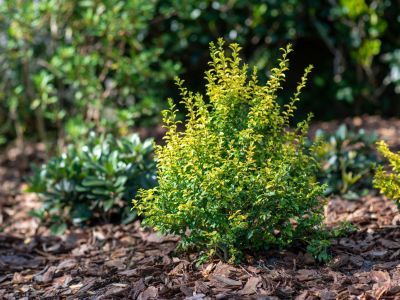Appropriate boxwood replacements come in different sizes and hues. Read on for tips on great plants to replace boxwood shrubs.
Boxwood Replacements
Boxwood is a fabulous shrub when you are creating a garden, easy-care and tolerant of sheering and shaping. It is not without issues though. Pests are one. First, there was boxwood blight, then the box tree caterpillar was found to be decimating these foundation plants. So, whether you are tired of boxwood or fighting boxwood pests, it may be time to consider boxwood alternatives. Plants to replace boxwood won’t be exactly like your boxwood shrubs, but they each offer some advantages.
Substitutes for Boxwood
One of the best alternatives to boxwood is inkberry (Ilex glabra), an evergreen holly. People love these plants as replacements for boxwood since they have a similar look. Inkberry has small leaves and a rounded habit that makes it look a bit like boxwood. In addition, the plants grow into a hedge faster than boxwood. They are low care and drought resistant too. It even has small white spring flowers that develop into black berries. Another plant to consider is dwarf evergreen Pyracomeles Juke Box®. This plant can easily be mistaken for boxwood with its tiny, glossy leaves and small branches. It grows into a ball to 3 feet (1 m.) tall and wide. Another of the fine boxwood alternatives is Anna’s Magic Ball arborvitae (Thuja occidentalis ‘Anna van Vloten’). It also has that nice, rounded habit that reminds you of boxwood and remains vibrant all year long. Anna’s Magic Ball is a bright, glowing shade of yellow only one foot (31 cm.) tall and compact. Privets are great plants to replace boxwood too. Check out Golden Vicary privet (Ligustrom x ‘Vicaryi’), which grows quite large, to 12 feet (4 m.) tall and 9 feet (3 m.) wide. This plant also grows faster than boxwood and tolerates sheering into a formal hedge. The foliage is a standout yellow with a faint pink blush in fall and a deep purple hue in winter. For a smaller privet, go with Ligustrum ‘Sunshine’ that averages 6 feet (2 m.) tall and half that wide. Its small leaves give it the same texture as boxwoods.
